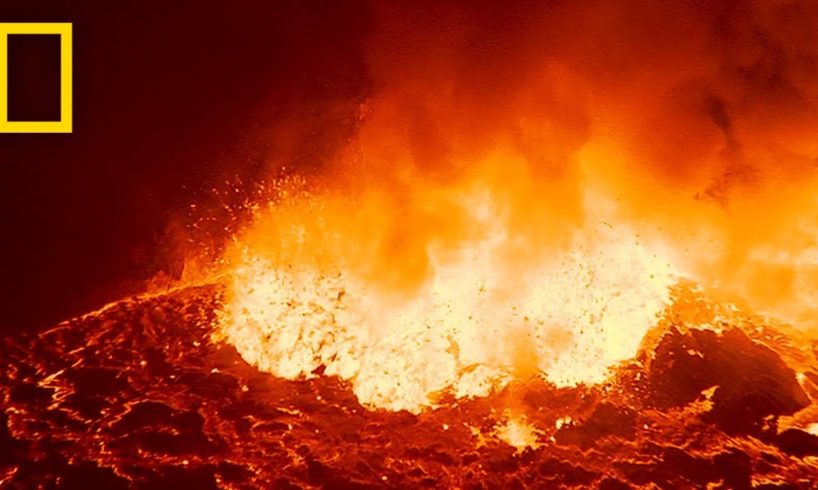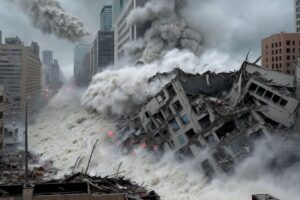
What are supervolcanoes, and how catastrophic can they be? Learn how supervolcanoes form, where supervolcanoes are located, and how their destructive capabilities can make way for new life.
➡ Subscribe: http://bit.ly/NatGeoSubscribe
About National Geographic:
National Geographic is the world’s premium destination for science, exploration, and adventure. Through their world-class scientists, photographers, journalists, and filmmakers, Nat Geo gets you closer to the stories that matter and past the edge of what’s possible.
Get More National Geographic:
Official Site: http://bit.ly/NatGeoOfficialSite
Facebook: http://bit.ly/FBNatGeo
Twitter: http://bit.ly/NatGeoTwitter
Instagram: http://bit.ly/NatGeoInsta
Read more in “How dangerous are supervolcanoes? Get the facts.”
https://on.natgeo.com/2FMOXoJ
Supervolcanoes 101 | National Geographic
National Geographic
https://www.youtube.com/natgeo
source







Supervolcanoes have created unparalleled natural beauty, all in the wake of some of the world's most cataclysmic events. What intrigues you the most about these volcanoes?
Her voice is soothing
Basically a giant pimple in the Earth's crust.
Imk101
What is the name of that calm music
I like the calm music
for those who want:
Supervolcanoes are the most violent and complex class of volcanoes
But despite thrir destructive capabilites, they can also make way for life renewed.
Around 20 supervolcanoes are scattered across the planet.
They're usually characterized as as large depressions in the ground, called calderas, located above multiple openings in the earth’s crust.
In terms of eruptions, supervolcanoes explode at a magnatude of eight, the highest and most violent classification on the volcanic explosivity index. Supervolcanoes undergro a life cycle of three major stages: a surge of trapped magma a supereruption, and a resurgence.
The first stage of a supervolcano’s life cycle involes a pocket of magma trapped under the earth’s crust . Called a hotspot, this magma reservoir is fed by a pipeline deep into earth’s molten interior.
It grows and builds pressure underground eventually causing the crust above to be pushed upward.
The supervolcano campi flegrei on the west coast of italy has pushed the ground up several times over the past few decades. At one point, within a matter of only two years, enough magma accumulated to cause the ground to swell up to six and a half feet. The next stage of supervolcano’s life cycle is a supereruption: at this point, the buildup of pressure in a magma reservoir hits a critical mass and then explodes, sending over 1000 cubic kilometers of tephra or ash and rocky material, into the sky.
The most recent supereruption occured in New zealand apprximately 26 000 years ago. The supervolcano Taupo ejected abour 1100 cubic kilometers of tephra into the air, enough material to constitue nearly half a million great pyramids of Giza .
After a supereruption, a supervolcano undergoes a stage called resurgence.
Having dispelled its contents, a supervolcano’s magma reservoir collapses and forms a caldera. The Yellowstone caldera in united states is currenlty in resurgence after supereruption occured about 640 000 years ago. In the time since, freshwater collected in the caldera of from a lake, plants and wildlife retourned to reclaim the space, and some of the world’s largest geothermal features emerged.
Supervolcanoes have created unparalled natural beauty, all in the wake of some of the world’s most cataclysmic events.
You said Mount Toba had a super euption 26,000 years ago, but every else I look says 74,ooo years ago
2:17 is that a face??
Supervolcano is Yellowstone but Yellowstone makes a Large boom 💥 sound
INDONESIAN MOUNTAIN VOLCANO AND SUPERVOLCANO RING OF FIRE🌋🌋🌋🌋🌋🌋🌋🌋🌋🌋
🏞️🌄 🇮🇩
One situation about National Geographic forgot add one supervolcano with name Plato Putarano.
Kkkkkkkkkkkkkkkk
I hate to hear 2nd level (female) voices explain stuff, while we all know the real brains behind it all is some nerdy shy guy, who is probably wayyyyy more interesting to listen to.
Who cares
Thank you this was very helpful and informative 👍👍
2:22 that face
Adam and Eve were active volcanoes. Lava song Moana.
Fire is life. For earth and living beings
I have an idea. If magna can be used to grow plants like Hawaii, we can use magma to reterraform the earth and use it to colonise mars
is it it just me or is her voice soothing?-
and why is this more useful than my 1 hour science class
Wow, also me when takis
Yellowstone 💛 better not 🚭🚫 erupt.
I love you Nat Geo <3
I hate lava and volcanoes 🔥🔥🔥🔥🔥
🔥🔥🔥🔥🔥🔥🔥🔥🔥🔥🔥🔥🔥
0:20 did i just see Philippines with a caldera?
New Zealand looks so good what a sight 😍
They left out what happens after Caldera.
I wanna see a super volcano twice the size of the burj kalifa